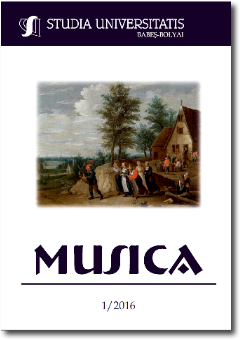DER ERSTE SCHWELLKASTEN, DER NICHT DER ERSTE WAR
THE FIRST SWELL-BOX WHICH WAS NOT THE FIRST
Author(s): Balázs MéhesSubject(s): Music
Published by: Studia Universitatis Babes-Bolyai
Keywords: iberian organ music; swell-box; echo; using of the swell-box; performance practice; crescendo; decrescendo; Martín y Coll; Flores de Música.
Summary/Abstract: The swell-box first appeared on the Iberian peninsula in the 17th century. Its origin and European influence has hardly been revealed adequately so far. Though this article mentions the history of the English and German swell-boxes, it focuses on the types of the Hispanic echo-boxes, their different kinds of moving mechanisms (estribo, zapata, rodillera). Bibliography usually says that the mechanism was used for emphasizing the opposition of nearer and further sounding, a kind of acoustic delusion could be provoked by its usage, not a long lasting crescendo or decrescendo. The article states that the great collection of Fray Martín y Coll denies this supposition. It comes clear that the early 18th century echo-boxes were able to produce accent-like sound effects and slight enhancement of certain harmonies and melodic turns, which is confirmed by a few score sheet examples. The aim of this article is to help further research with relevant questions.
Journal: Studia Universitatis Babes-Bolyai - Musica
- Issue Year: 61/2016
- Issue No: 1
- Page Range: 17-40
- Page Count: 24
- Language: German

